In order to maintain optimal performance and prevent costly engine damage, it’s crucial to ensure your Jeep Liberty is equipped with a high-quality radiator. Proper cooling: that’s the first thing you gotta ensure to increase the engine’s lifespan. To this day, overheating is a big issue, especially in the hot-climate southern states. And if you do lots of off-roading behind the wheel of the Liberty, the cooling system needs to be up to the task. Now, it’s not that hard to find decent-quality coolant and replace it once in a while.
Getting the right radiator can be a bit more challenging, though. What does the best radiator for Jeep Liberty look like, anyway? With factors such as compatibility, cooling efficiency, and durability to consider, finding the perfect fit might seem overwhelming. After testing over 50 aftermarket units, I picked the following five radiators for my list. They are all reliable, reasonably priced, and worth the investment. So, without further ado, let’s see what each brand has to offer!
Best Radiator for Jeep Liberty Review
1. Spectra Complete Radiator CU2481 for Jeep Liberty
This might not be the cheapest replacement radiator for the Liberty, but it sure does have a long list of pros. Most importantly, it features a leak-free design. Plus, thanks to the pressurizing technology, it has an extended lifespan. At Spectra, every single radiator goes through extensive testing to ensure proper performance. Thanks to the market-leading quality standards, these radiators easily pass the toughest trials.
Spectra is a US-based company, by the way, and uses local materials for production. Easy to install and maintain, CU2481 is one of the best options for Jeep’s SUV. I do have to warn you about problems with quality assurance and control, though. Some buyers complain about getting the wrong radiators. Others claim the packages arrive with dents and holes. But, these are minor issues and happen to a small number of clients.
With Spectra, you’ll get a US-made, designed, and meticulously tested radiator. It fits the Liberty perfectly and boasts a pressured and leak-resistant design. So, despite the tiny QA/QC issues, it will be a safe bet for the fans of extreme racing and off-roading.
2. DWVO – Complete Radiator for Jeep Liberty 3.7 V6 6Cyl
If you’re driving a Liberty with a 3.7-lit V6 engine, the DWVO radiator will be a good investment. One of its biggest selling points is the premium-quality coating. It does an excellent job of protecting the main body from corrosion/rust, allowing the radiator to perform at the top of its game. Next, the high-density, multi-louvered fins boost the overall efficiency. And what about the installation, you might ask?
Well, the package includes a rather helpful user guide. However, the actual installation routine isn’t always very simple. Depending on the make, model, and year of your vehicle, you might have to apply some DIY skills to mount it properly. I’m talking about minor customizations to ensure a tight fit. Furthermore, the nuts are only secured by plastic, which is the least reliable solution.
Brick-strong coating, high-density, durable fins, and a friendly installation guide are this radiator’s biggest pros. As for the cons, it’s not always an ideal fit. It will be a direct, bolt-on installation for the six-cylinder 3.7-lit engine, of course. But, you’ll have to modify it a bit to make it work with other motors.
3. CSF 3379 Replacement Radiator
Next on the list, we have another safe bet for the Liberty. CSF is one of those vehicle-specific radiators that were designed with precision. So, what does that mean in terms of performance? Superb cooling efficiency, for starters, and an ideal fit. The installation process will only take you 1-2 hours at a slow pace, and you won’t need to buy any expensive tools. In many ways, it’s like an OE part.
Add special clad, military-grade aluminum, and you’ll get one of the most durable and effective aftermarket radiators out there. Designed using advanced computer software (Unigraphics), it will be a bargain for any Jeep Liberty driver looking to improve their cooling systems. The only downside has to do with customer support – it’s a bit slow. Yet, the agents are very friendly and helpful.
Thanks to the superb build and material quality, precise engineering, and simple, hassle-free installation, the CSF radiator is one of the finest options on the table. Do keep in mind, though, that while customer support is easy to find common ground with, it’s not particularly quick to respond.
4. TYC – Plastic Aluminum Replacement Radiator
Every single radiator on today’s list is pretty good at handling weather extremes. Still, none of them are as great at working with extreme temps as the one by TYC. Although it’s not 100% aluminum-built, the high-density, heat-resistant plastic parts easily “tame” over-the-top temps. Brazed with the Nocolok furnace process, 2481 can withstand the toughest off-roading tests.
The overall design deserves our attention as well. This is a rather flexible and versatile radiator that’s compatible with a long list of Liberties. Do check for fitment before ordering it, however! Oh, and thanks to clever logistics, you won’t have to wait for the delivery for long. One thing to keep in mind: the package doesn’t include all the necessary installation hardware. So, make sure not to throw away the factory clips, pads, and bolts.
Fast shipment, enhanced compatibility, and market-leading cooling efficiency – that’s the TYC radiator in a nutshell. If you put reliability and durability first, this could be it for you. Just remember to keep all the stock installation hardware, because this radiator might not include any.
5. AUTOSAVER88 – Best Replacement Radiator for Jeep Liberty
Is this really the best replacement radiator? Is Autosaver88 a worthy choice for Jeep Liberty? This is the least expensive unit on the list, that’s for sure. So, if you’re a bit worried that you won’t be able to afford a brand-new radiator, this low-priced option might be the right pick. It arrives in a protective, highly secure package that ensures the radiator isn’t damaged in any way during transportation.
Plus, the company backs its product with a standard 12K miles or 12-months warranty. What I didn’t like about this otherwise great unit was the engineering quality. It’s decent, but still not on par with the more expensive brands. Are you ready to sacrifice a bit on the build quality for a cheap price tag? Only you can answer that!
For a Liberty owner on a tight budget looking for a replacement radiator AutoSaver88 is a no-brainer. Protected by a warranty deal and packed in a protective box, it’s also quite solid at keeping the engine cool and ready to rumble. The material quality isn’t that great, though.
Buyer’s Guide
Ok, that’s it for my top-five third-party radiators for the Liberty. If you’re 100% happy with at least one of the units, just go ahead and get it! On the other hand, if you like these radiators, but still want to check out some other options, this guide will be of great help. Here, we’ll talk about the importance of build quality, efficiency, the tubes, rows, ease of installation, pricing, and more.
#1: Engineering + Materials
What’s the best material for an aftermarket radiator? Well, for the main body, you want to go with aluminum. This is one of the most heat- and corrosion-resistant materials on the planet, which makes it a perfect choice for this. More specifically, brazed aluminum has proven to be highly efficient and effective. Stainless steel is almost as good as aluminum but slightly less efficient. Besides, it’s not very popular these days.
A quick note: some parts of the cooling system (say, the tanks or the gaskets) are crafted from high-density polymer plastic, and that’s also an industry standard. As for the overall construction quality, I always look at the manufacturer first. If it’s a trusted brand with a stellar reputation, best believe the engineering will be decent. If you see “TIG-welded” in the specs, that means the radiator will be durable and reliable. Among the best radiator brands, these qualities are standard.
#2: Cooling Efficiency Comes Next
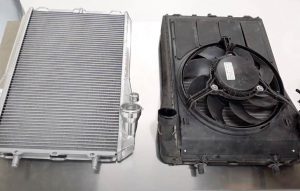
However, if you’re an off-roading fan, I would recommend looking elsewhere. The Liberty’s cooling system isn’t very impressive, which is why the radiator needs to be as strong as possible. The finest units are up to 45% better at cooling the motor, and that’s what you should go for. Capacity is another important factor. The higher the capacity, the more effective the radiator will be at its job.
#3: Core Volume and Rows
Last, but not least, check the core volume slash tube area. Again, the bigger the radiator panels/fins, the more capable it will be of handling the most extreme temperature spikes. Next, we need to discuss radiator rows. Here are the facts: every single radiator consists of tubes that the coolant flows through. A row describes how many tube lines the radiator has: one, two, or three.
And in most cases, extra tube rows equal better cooling. However, that’s not a universal rule. Sometimes, brands use multiple tube layers as a marketing move, when in reality, they’re not as efficient. That’s right: a single-row radiator can be better than one with three rows. But, that’s more of an exception to the rule.
#4: Packaging and Warranty
There isn’t much to worry about with the package. Just make sure it includes all the necessary hardware. Otherwise, you’ll have to order a new set (unless you kept the factory hardware, of course). As for the warranty, most radiators usually come with a one-year/12K miles warranty. The more expensive kits will be protected by a lifetime warranty or a replacement guarantee.
#5: How Much Does a Decent Radiator Cost?
The quick answer – not much. First, let me say that if you take proper care of your radiator, it will serve for 7-8 years or even a decade. A brand-new unit, in turn, can cost as low as $80, and it will perform much better than the stock gear. But, if you want premium material quality, advanced engineering techniques, and at least a standard warranty, the price will be in the 250-350 bucks range.
The Jeep Liberty radiator replacement cost is not as high as one might think, especially when considering the longevity and performance enhancements it brings. For the average Liberty driver, the “sweet spot” is $100-150. For that kind of money, you’ll be able to get a “workhorse” that will keep the engine in optimal shape by preventing overheating or something worse. So, yes, the average price on a new radiator from a big brand is quite reasonable.
What Info Do I Need to Know to Order a Radiator for my Jeep Liberty?
We just talked about build quality, materials, radiator efficiency, and warranty deals. And, these are all very important factors that can “make it or break it” for any aftermarket radiator. However, the first thing to check before buying a brand-new radiator is compatibility. This term is used to describe whether the radiator will fit your vehicle, or not. Thus, you need to know the exact make, model, and year of your Liberty SUV.
Once you get that right, it will be just a matter of picking a best replacement radiator that fits all those parameters and comes at a reasonable price. The engine also matters. Say, some radiators are specifically designed to be a perfect fit for the 3.7-lit six-cylinder motor. Others only work with the 2.4-lit 4-cylinder engine. And then you’ve got units that are compatible with other units.
A quick note: some auto/body shops and online stores ask the driver to provide info on the Jeep’s generation and model year. Others only require the trim level; sometimes, that’s enough to figure out what engine the SUV is packing. But how do you figure out the exact name of your Liberty and engine? Well, you could always refer to the user manual. And what if it’s nowhere to be found?
Step out of the vehicle and check the back: there, you should find the brand’s name on one side, and the model on the other. Plus, there’s always the big logo that’s hard to miss. The Title and Registration documents will include all the necessary data as well. You could also try going back to the dealership, but they won’t disclose any information unless you can prove that you are, indeed, the owner.
Alright, that is pretty much all you need to know before making a confident order online or at a local store without having to worry about compatibility. Speaking of fitment, I already mentioned that the package should include the necessary hardware for a fast, trouble-free installation. Oh, and remember that mechanics tend to charge 80-90% of the radiator cost. So, if you pull off the installation on your own, that will save some big bucks!
How to Bleed Cooling System on a Jeep Liberty?
This might sound like a big deal, but it actually isn’t, as long as you do this “by the book”. Now, the term “bleeding” is used to describe the process of removing air from the cooling system. Air is one of the biggest enemies of any fluid, including oil, brake fluid, transmission fluid, and more. When there’s too much air, the liquid loses its efficiency and fails at doing its job (like keeping the engine from overheating).
Every time you replace the stock radiator, you gotta flush the coolant – that’s a universal rule. And, when fresh coolant is added after installing the new radiator, bleeding is usually an issue. So, here’s what you should do to bleed the Liberty’s cooling system properly:
- First, remove the radiator cap
- Next, go ahead and put a funnel to add some coolant and fill the radiator
- This will help remove most of the air bubbles – they’ll just come to the surface
- Once the radiator is full (and not getting low because of air escaping the system), get into the cabin
- Start the Liberty and set the heat to the far right – the highest setting
- You’ll instantly feel the air coming out of the vents
- Set the fan to the lowest possible setting. This way, you can check the coolant’s temperature
- Don’t let the coolant level drop – keep it topped off for this to work
- Once the motor gets a bit “worked up”, the liquid level will drop
- This will be the thermostat letting the coolant flow into the block
- So, put the cap back on and let the coolant run for a minute or two
- Get back into the driver’s seat and take the vehicle for a quick test
- I recommend checking on the coolant level the next day to make sure it hasn’t dropped
What Tools are Used to Change a Radiator for a Jeep Liberty?
Let me start by saying that you won’t need any expensive, pro-grade tools that cost a fortune. Most of the equipment that is required to remove the factory radiator and install a new one is probably already collecting dust in your garage. And, it takes a lot more time and effort to remove the stock radiator than to install the aftermarket unit. Here’s a quick breakdown of all the tools you’ll need for this:
- A wrench set (you can get a regular one from the local hardware store)
- A screwdriver and/or pliers (it would be best to have both)
- A jack with a set of jack stands to lift the SUV
That’s it! As I just said, the list of the necessary tools isn’t very big. However, there are still some things that are absolutely necessary for a successful replacement. Take a look:
- Fresh coolant (to add into the system after you’ve flushed the old coolant)
- An old bucket (where you can empty the old antifreeze)
- A thermostat (some radiators include one, by the way)
- A set of hoses + hose clamps for the new radiator
- Protective gloves and a pair of eye goggles
Some experts also recommend getting your hands on a Chilton or Haynes manual, but I always prefer using the radiator’s instructions instead. While the installation process is mainly the same, there might still be some minor differences that should be taken into consideration. And remember to not rush yourself. To properly remove the old radiator and to put the third-party one in its place, you’ll need at least one or two hours.
On the bright side, this can be done manually – you won’t have to ask a friend to lend a helping hand. It all comes down to following the user manual closely and using the right tools for the job. And if the stock bolts are a bit rusty and don’t want to come off, some penetrating oil should fix that right up.
Conclusion
When constantly pushed to the limit, engines tend to overheat – that’s just how it is. So, what can you do to prevent that? Not put the pedal to the floor? Stop doing any off-roading to protect the gear? Good news: you won’t have to sacrifice anything to safeguard the motor. Just don’t forget to invest in a premium-quality radiator, and it will take care of everything!
Today, we checked out five top-notch radiators from big international brands. They’ll give you the best bang for the buck and serve for many years. And, to learn more about changing the radiator, bleeding the coolant, and finding the perfect match for the Liberty, check out the buyer’s guide and FAQ section. Still got some questions left? Don’t hesitate to reach out through the comments section!


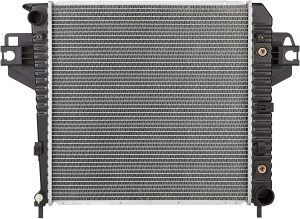
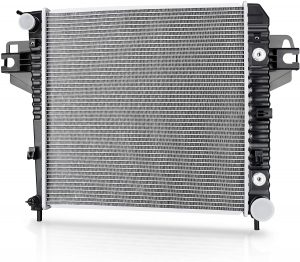
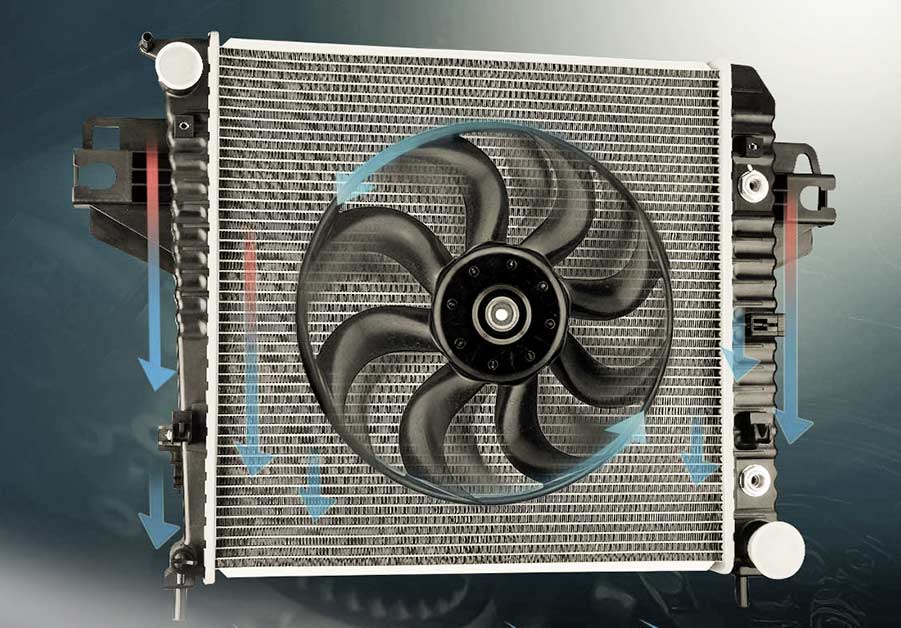
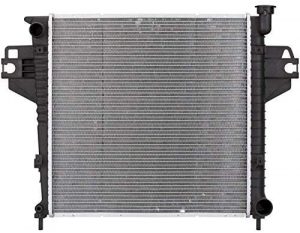
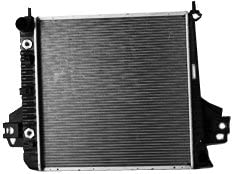

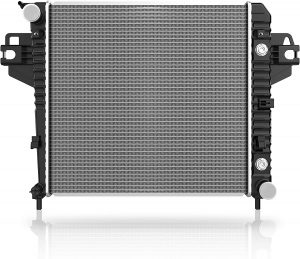
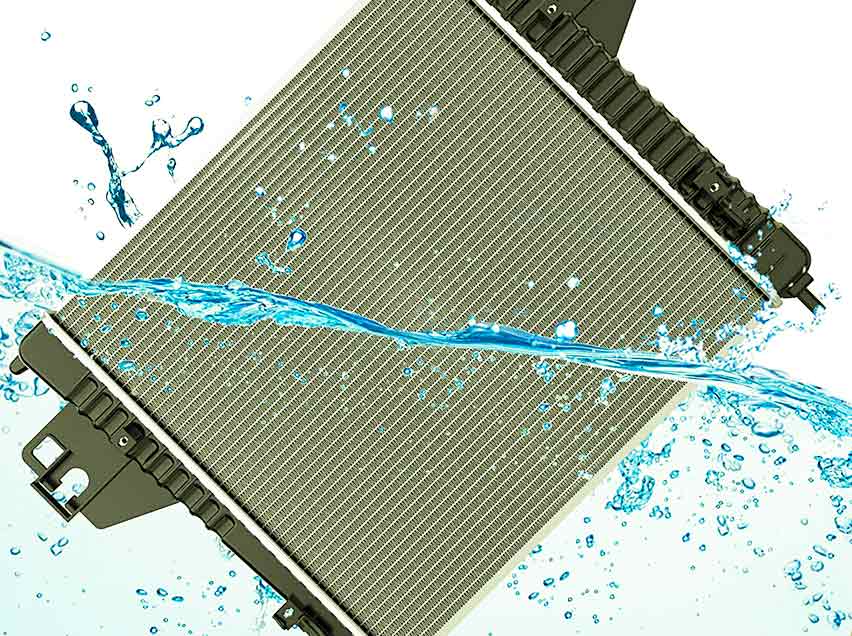
Add Comment